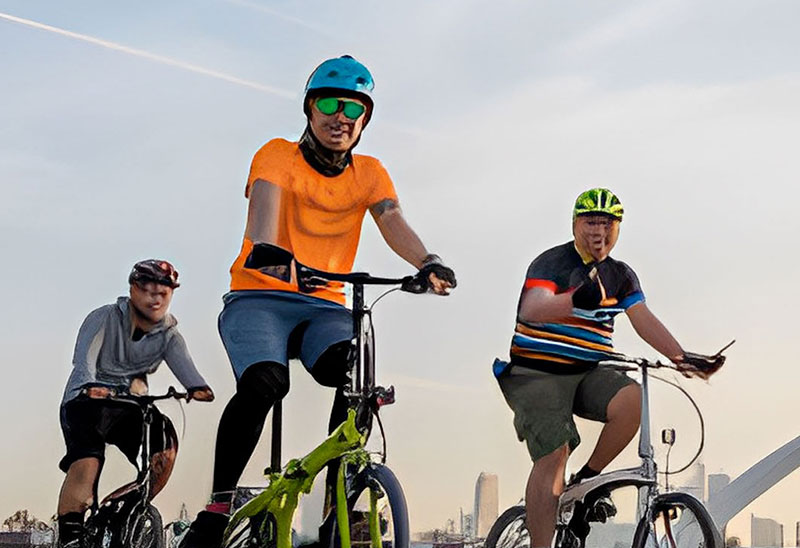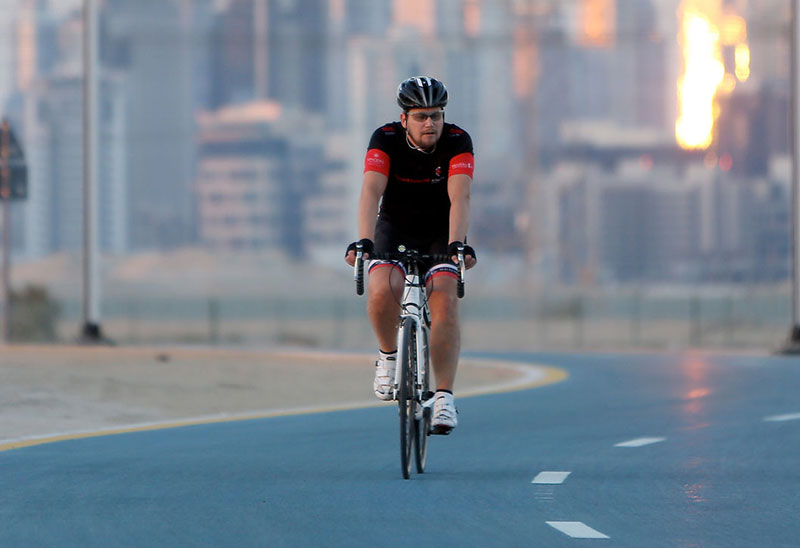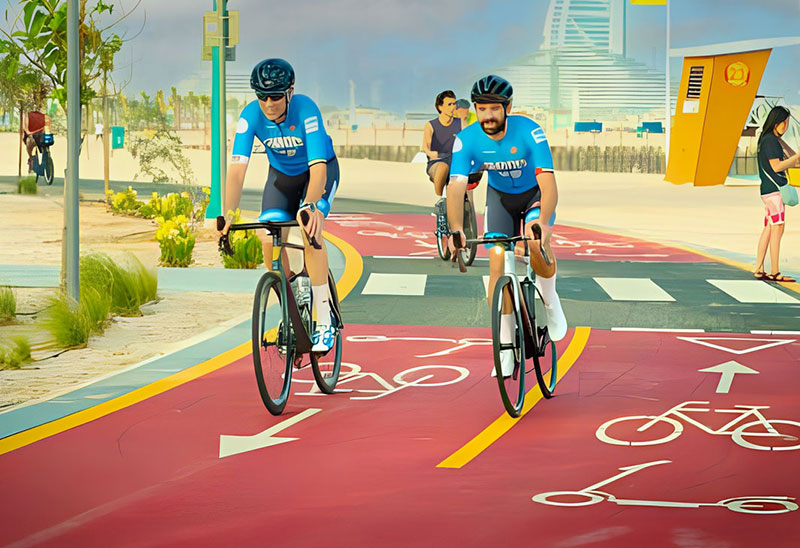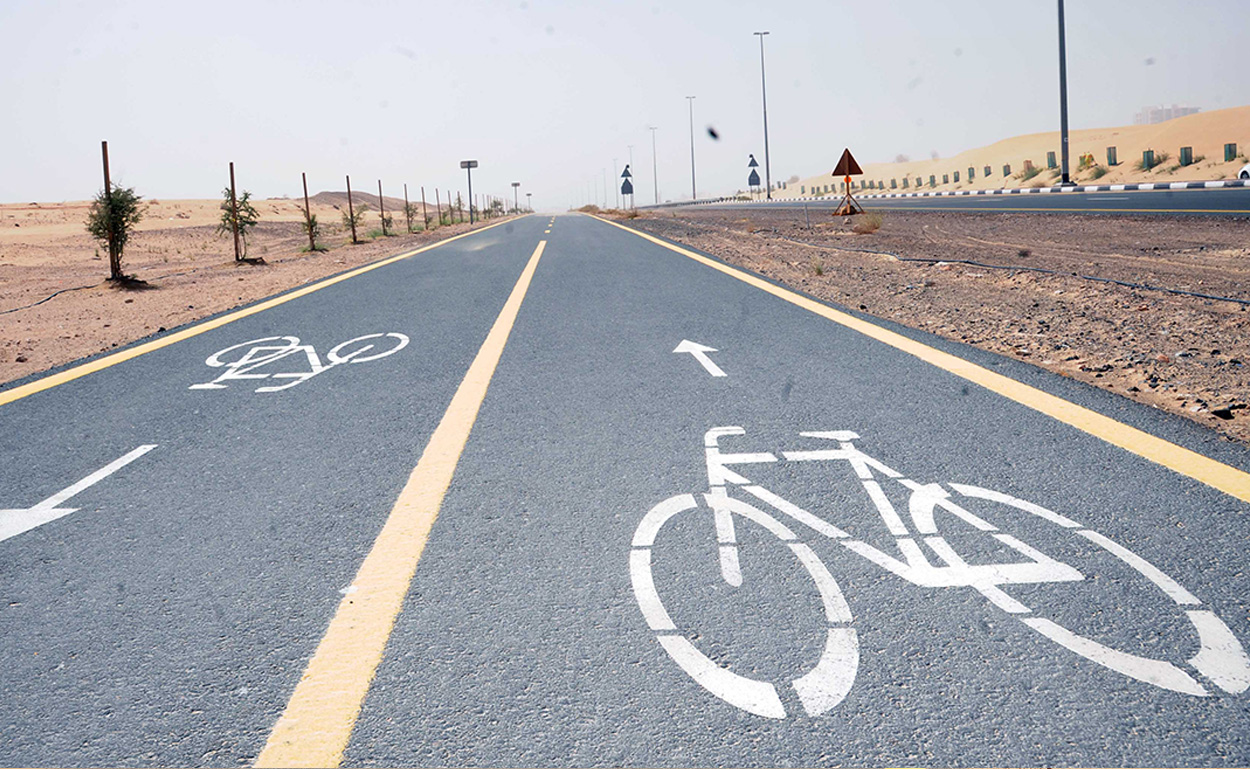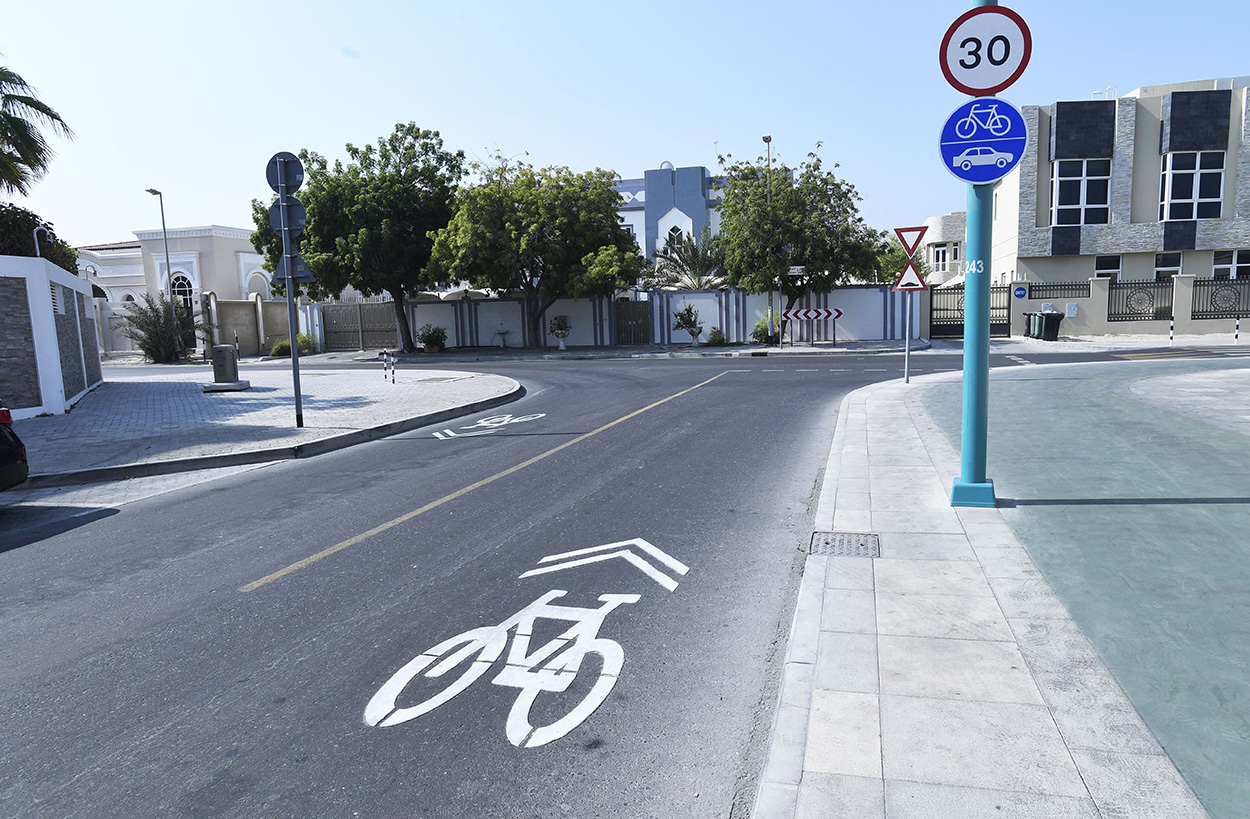Cycling Tracks
About Cycling Tracks
The construction of cycling tracks in the Emirate of Dubai is in response to the directives of HH Sheikh Mohammed bin Rashid Al Maktoum, Vice-President, Prime Minister of the UAE and Ruler of Dubai so as to provide suitable and attractive options for residents and tourists of Dubai and encourage them to practice the sport of biking. It is also part of RTA's master plan for the provision of dedicated cycling lanes spanning the entire Emirate. These lanes are intended to be used by an environment-friendly means of mobility or practicing sport; which echoes RTA's vision (The world leader in seamless & sustainable mobility) as well as its strategic goal of making people happier.
Currently, RTA is set to construct a 13.5 km track tailored for bicycles, scooters, and pedestrians. This new track, which links Al Sufouh to Dubai Hills via Hessa Street, features two architecturally innovative bridges crossing over Sheikh Zayed Road and Al Khail Road, and it is part of the Hessa Street Improvement Project currently undertaken by RTA spanning 4.5 km between the intersections with Sheikh Zayed Road and Al Khail Road.
The planned multi-use track measures 13.5 km in length and 4.5 metres in width (2.5-metre-wide track for cyclists & scooter riders, and 2-metre-wide track for pedestrians). It connects Al Sufouh to Dubai Hills via Hessa Street. It serves 12 diverse residential, commercial, and educational areas in addition to service facilities in vibrant neighbourhoods like Al Barsha and Al Barsha Heights. The track is designed to improve connectivity for first and last-mile trips.
This cycling track connecting Al Sufouh and Dubai Hills is a key component of the Dubai cycling tracks master plan to develop and expand cycling tracks and enhance connectivity across the emirate. The plan aims to increase the overall length of Dubai’s cycling tracks from the current 560 km to 1,000 km by 2030. This expansion will connect coastal areas like Jumeirah, Al Sufouh, and Marina to external tracks at Al Qudra, Seih Al Salam, and Nad Al Sheba via Al Barsha, Dubai Hills, and Nad Al Sheba.
Public parks
Cycling tracks extending 18.441 km have been constructed by Dubai Municipality inside ten public parks to serve park-goers. The parks include:
- Mushrif Park
Track length: 4,000m
Opening hours: 8:00am - 10:00 pm
View directions - Al Warqaa Park
Track length: 3,000m
Opening hours: 8:00am - 10:00 pm
View directions - Al Nahda Pond Park
Track length: 345m
Opening hours: 8:00am - 10:00 pm
View directions - Al Khawaneej Pond Park
Track length: 2,000m
Opening hours: 8:00am - 10:00 pm
View directions - Quranic Park Al Khawaneej
Track length: 3,200m
Opening hours: 8:00am - 10:00 pm
View directions - Garden Abuhail
Track length: 310m
Opening hours: 8:00am - 10:00 pm
View directions - Al Barsha Pond Park
Track length: 1,450m
Opening hours: 8:00am - 10:00 pm
View directions - Al Sufouh Park
Track length: 230m
Opening hours: 8:00am - 10:00 pm
View directions - Nad Al Sheba Park
Track length: 906m
Opening hours: 8:00am - 10:00 pm
View directions - Al Barsha South Park
Track length: 2,000m
Opening hours: 8:00am - 10:00 pm
View directions
Developer areas
Developers have worked to allocate bike tracks, whether shared with pedestrians or bike-only paths, to encourage exercising and serve visitors and residents of their areas. The developer areas are:
- Sheikh Mohammed bin Rashid Boulevard
- Dubai Internet City
- Business Bay track
- Palm Jumeirah track
- Jumeirah Lakes Towers
- Marina track
- Greens track
Future cycling tracks till 2025
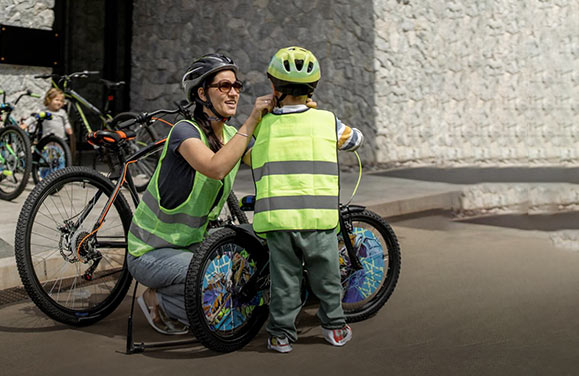
Future Cycling Tracks
Below is a list of the cycling tracks planned for the future:
- Hessa Street Track
- Tunis – Al Nahda street track, from Al Khawaneej to Al Mamzar
- Track from Al Khawaneej to Saih Al Salam
- Mushrif Track next to Sheikh Zayed Bin Hamdan Al Nahyan street
- Track from Jumeirah to Al Khail Road
- Al Barsha 1 Area Track
- Al Barsha 2 Area Track
- Al Khawaneej 2 Track
- Al Quoz Creative Zone Track to Mall of the Emirates
- A track connecting Al Khawaneej to Al Mamzar, Al Warqa to Saih Al Salam, and a track from the Financial Centre to Jumeirah Street Track
Safety rules
Main safety rules and obligations to ride an e-scooter safely
 Use the cycling track only for the purpose that is designated for
Use the cycling track only for the purpose that is designated for  Ride towards traffic, not the other way around
Ride towards traffic, not the other way around  Dismount the bicycle while crossing pedestrian crossing
Dismount the bicycle while crossing pedestrian crossing  The traffic law states that no cycling is allowed on roads above 60 km/h
The traffic law states that no cycling is allowed on roads above 60 km/h  Wear a helmet and reflective jacket
Wear a helmet and reflective jacket  Legal action will be taken for not complying with the instructions
Legal action will be taken for not complying with the instructions  Refrain from using dual headsets
Refrain from using dual headsets  Ride on the designated tracks and adhere to the speed limits
Ride on the designated tracks and adhere to the speed limits  Comply with the instructions on the information signs installed along the track
Comply with the instructions on the information signs installed along the track  Wear a bright and light colours at night
Wear a bright and light colours at night
Respect everyone's space
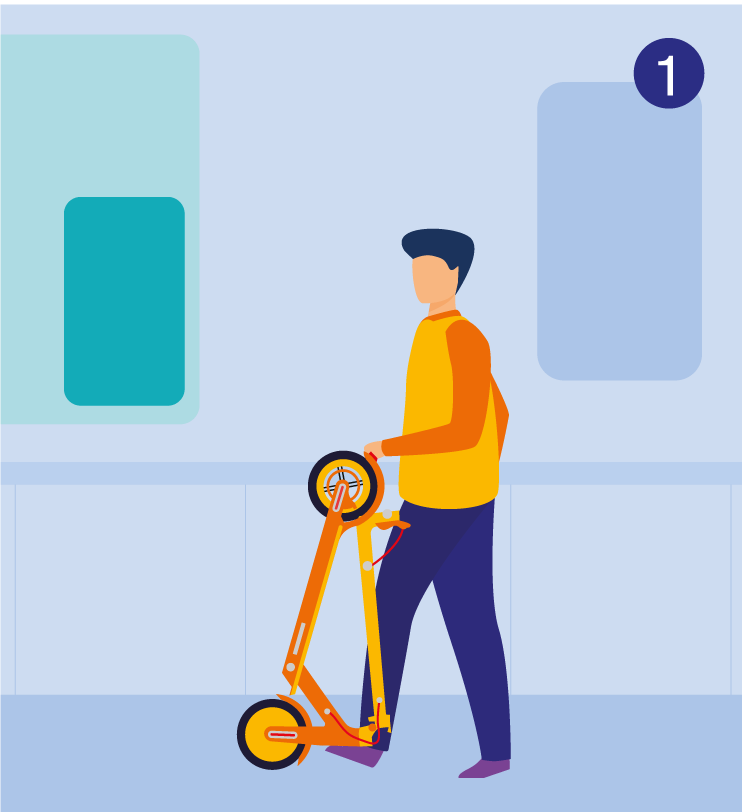
Fold your bicycle or e-scooter in the
station and in the train
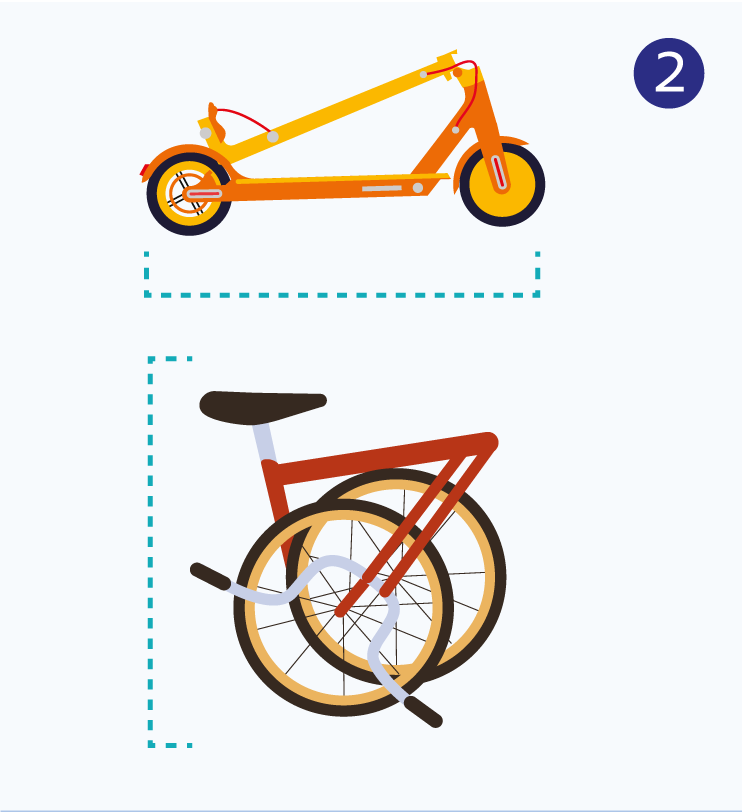
Folded bicycle and e-scooter should
be within allowed luggage size

Use the wide AFC gate
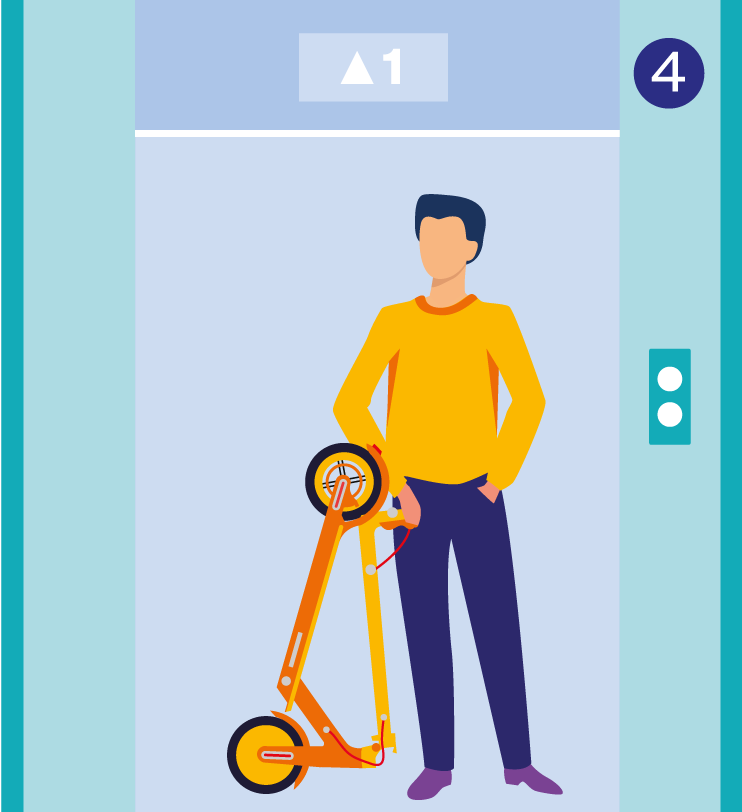
Use the lift and avoid the escalator
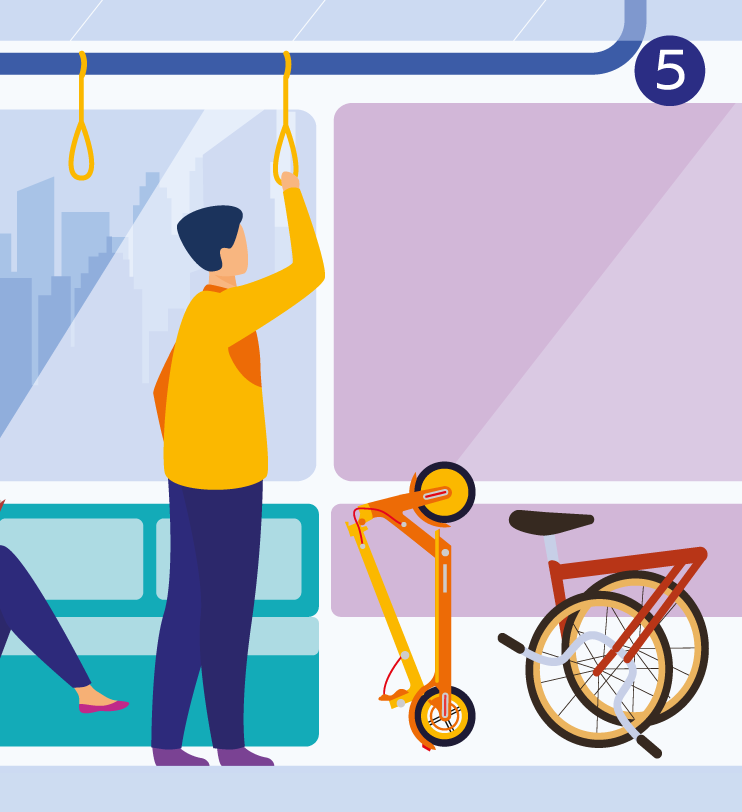
Folded bicycle or e-scooter should be
stored in the assigned luggage area
Regulating the use of cycling tracks and authorized areas
The Executive Council Resolution No. (10) of 2015 Regulating the Use of Pedal Cycles in the Emirate of Dubai has defined the conditions for using bicycles, areas where they are allowed to be used, as following:
- Bicycles are to be driven in designated tracks if any.
- Bicycles are not allowed on roads with speed exceeding 60 km/h.
- Cyclist are not allowed on the jogging track or on designated pedestrian lanes.
- Bike riders are expected to ride safely while exercising extreme caution and avoiding any actions that may put their safety or others at risks.
Note: Cycling is prohibited in metro stations and pedestrian bridges. However, it is allowed to pull a bike on pedestrian bridges and carry foldable bicycles in metro.
Determining speed limits for bicycles
The Pedestrian and Cyclist Design Manual has set an average cycling speed of 25 km/h as a standard speed. According to the manual, the speed limits may be affected by the following conditions:
- Riding bicycles in surrounding areas.
- Riding bicycles close to entrances and exits
- The nature of the track in terms of width and design.
Based on the foregoing criteria, the speed limits have been determined on cycling tracks, as follows:
- The speed limit on tracks existing in urban areas within the city shall be 20 km/hour, including tracks shared with pedestrians.
- The speed limit on cycling tracks for amateurs is 30 km/h (Al Warqa Square, Nad Al Sheba).
- External training tracks remain without speed limit, but cyclists must abide by safety instructions and conditions (Seh Al Salam, Al Qudra).
- The speed limit in shared areas with vehicles is set at 30 km/h.
2022 Regulating the Use of Bikes in the Emirate of Dubai
Uploaded date: 2022 Software: Acrobat Reader File Size: 1.8MB Download
Traffic signs and ground markings
 This sign indicates that the road or part of it is intended for the shared use of bicycles, electric scooters, and vehicle users
This sign indicates that the road or part of it is intended for the shared use of bicycles, electric scooters, and vehicle users Separate paths for pedestrians, electric scooters, and bicycles
Separate paths for pedestrians, electric scooters, and bicycles This sign indicates that the the path or part of it is intended for the shared use of pedestrians and bicycle users only
This sign indicates that the the path or part of it is intended for the shared use of pedestrians and bicycle users only This sign indicates that the path is shared between bicycle and electric scooter users
This sign indicates that the path is shared between bicycle and electric scooter users  This sign indicates that the path is for bicycle users only
This sign indicates that the path is for bicycle users only These signs are used at the entrance to residential areas that contain shared paths for vehicles, bicycles, and e-scooters
These signs are used at the entrance to residential areas that contain shared paths for vehicles, bicycles, and e-scooters This sign indicates the start of a dedicated path for bicycles
This sign indicates the start of a dedicated path for bicycles This sign indicates that the path is dedicated for bicycles
This sign indicates that the path is dedicated for bicycles This sign indicates the end of a dedicated bicycle path
This sign indicates the end of a dedicated bicycle path A ground mark stating the continuation of the shared path and placed at internal intersections
A ground mark stating the continuation of the shared path and placed at internal intersections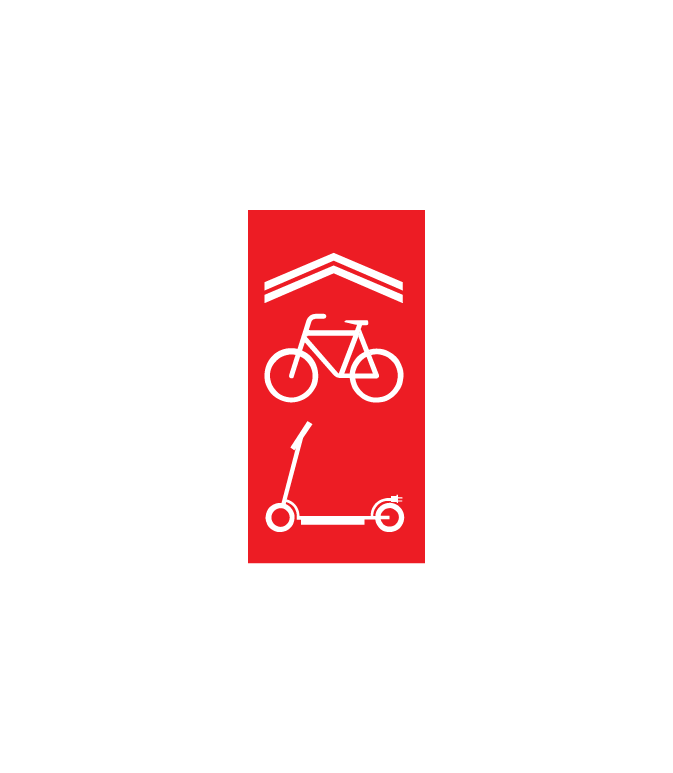 A red carpet road marking to alert the drivers to reduce their speed when entering soft mobility areas where riding e-scooters and bicycles is allowed
A red carpet road marking to alert the drivers to reduce their speed when entering soft mobility areas where riding e-scooters and bicycles is allowed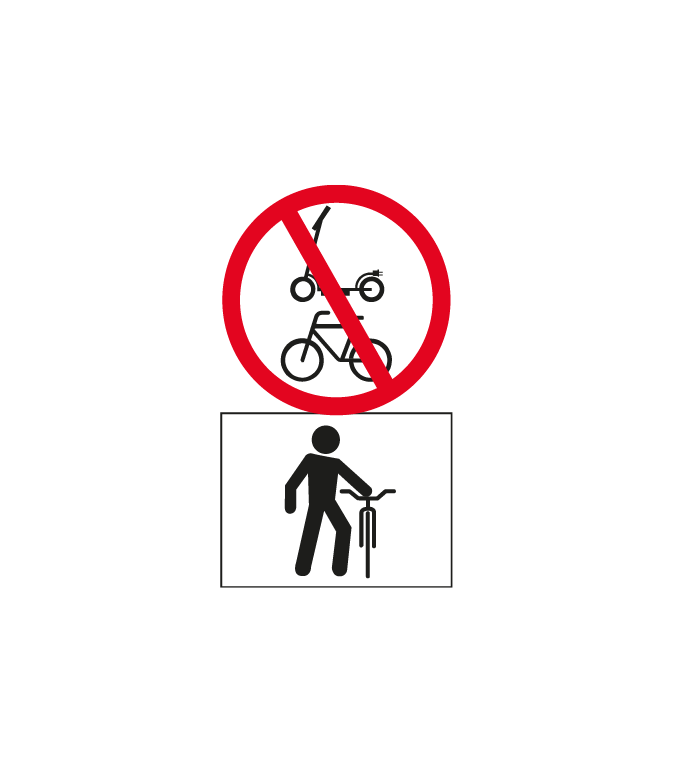 This sign indicates to dismount the electric scooter and bicycle at pedestrian crossings
This sign indicates to dismount the electric scooter and bicycle at pedestrian crossings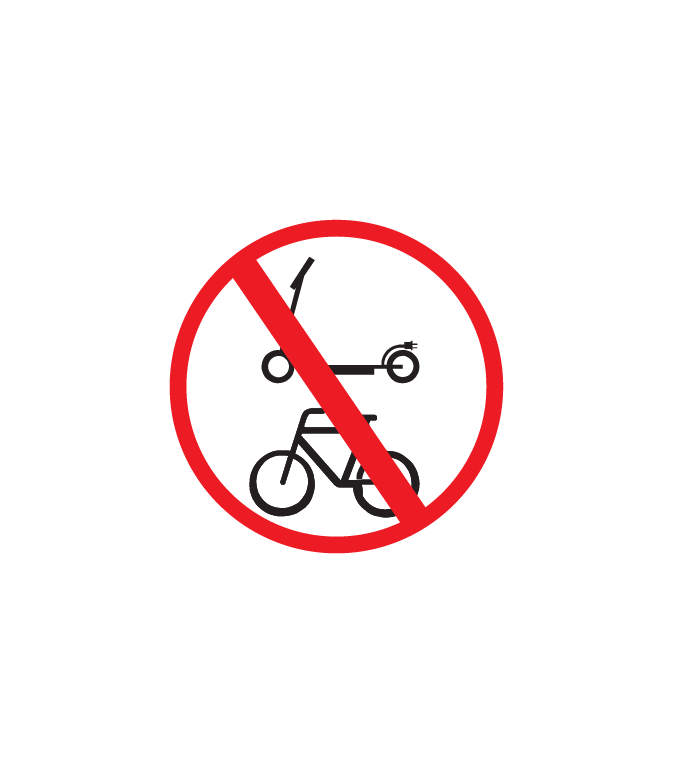 This sign indicates that riding e-scooters and bicycles is prohibited
This sign indicates that riding e-scooters and bicycles is prohibited

